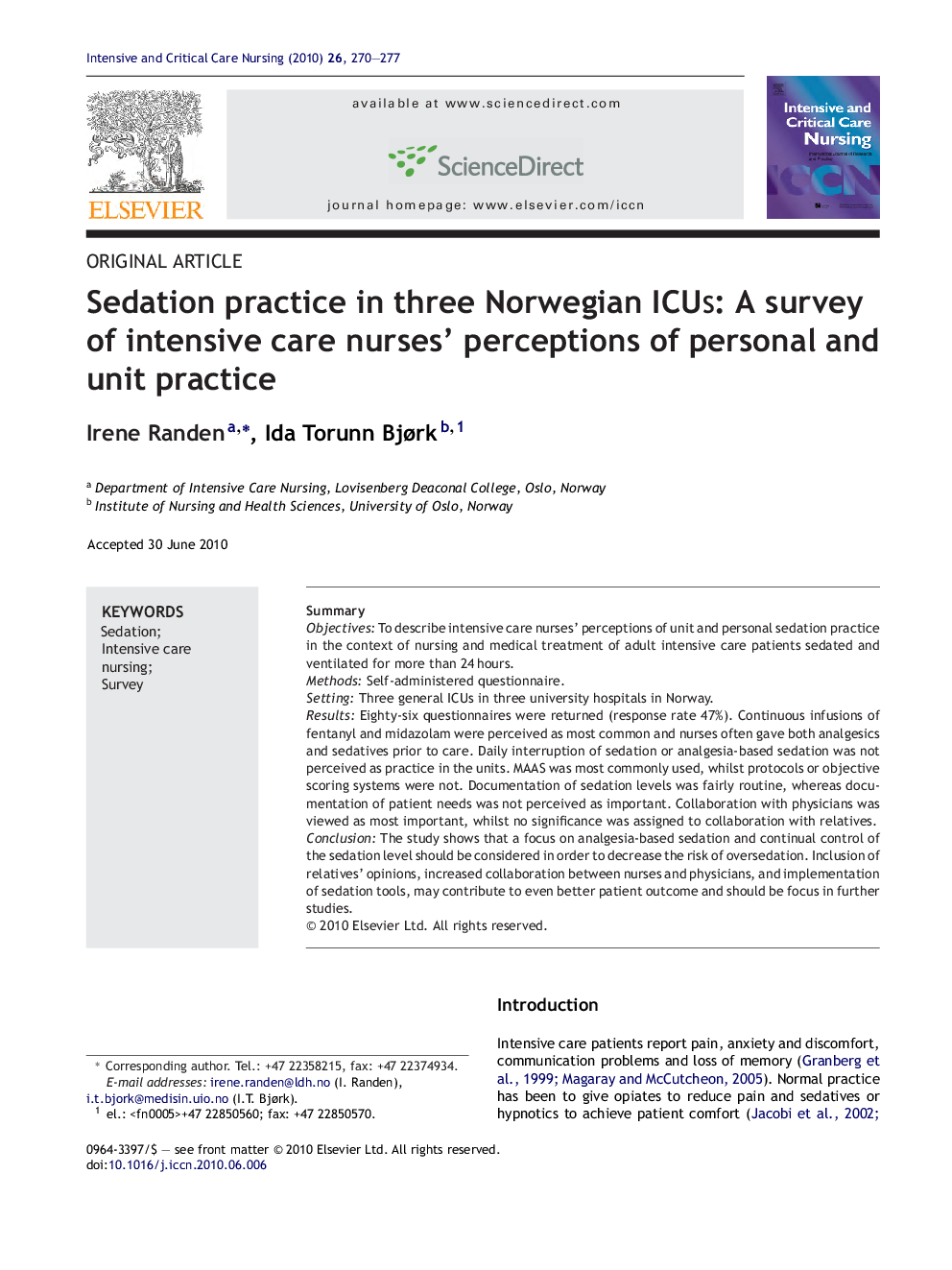| Article ID | Journal | Published Year | Pages | File Type |
|---|---|---|---|---|
| 2653252 | Intensive and Critical Care Nursing | 2010 | 8 Pages |
SummaryObjectivesTo describe intensive care nurses’ perceptions of unit and personal sedation practice in the context of nursing and medical treatment of adult intensive care patients sedated and ventilated for more than 24 hours.MethodsSelf-administered questionnaire.SettingThree general ICUs in three university hospitals in Norway.ResultsEighty-six questionnaires were returned (response rate 47%). Continuous infusions of fentanyl and midazolam were perceived as most common and nurses often gave both analgesics and sedatives prior to care. Daily interruption of sedation or analgesia-based sedation was not perceived as practice in the units. MAAS was most commonly used, whilst protocols or objective scoring systems were not. Documentation of sedation levels was fairly routine, whereas documentation of patient needs was not perceived as important. Collaboration with physicians was viewed as most important, whilst no significance was assigned to collaboration with relatives.ConclusionThe study shows that a focus on analgesia-based sedation and continual control of the sedation level should be considered in order to decrease the risk of oversedation. Inclusion of relatives’ opinions, increased collaboration between nurses and physicians, and implementation of sedation tools, may contribute to even better patient outcome and should be focus in further studies.
